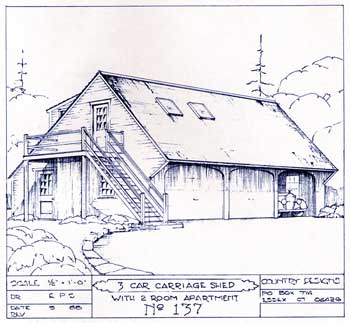Schwarz
View current page
...more recent posts
color mixable tool dip aka plasti dip
sales

PERKIOMENVILLE PA /
MAKE AN OFFER - Solid stone 3-sty colonial (1778) with new roof & windows. Interior needs rehab, selling as is. Village commercial zoning offers possibilities for professional/business opportunities. Frontage on Rt. 29 & Perkiomenville Rd. $150,000
Design and the Depression, The Debate: Part One
Is there an upside to the recession? Quite a few people seem to think so. David Goodhart, editor of Prospect magazine, hopes for a good recession in which only rich bankers will be laid off, and the effects of which will be largely ‘cleansing’.
The design version of this argument would have Zaha Hadid, Ross Lovegrove, Marcel Wanders, and Campana Brothers canned; and a moral reawakening would replace stylistic decadence. With echoes of the early-Nineties, designers are again beating themselves up over their supposed excess. Back then, they regretted the superficiality of Eighties’ Post Modernism and the matt black and chrome-trimmed Yuppie lifestyle. Today, outlandish architecture and design-art are placed alongside Damien Hirst’s Diamond Skull and the Candy and Candy’s apartments as symptoms of empty extravagance.
But the Bring-On-The-Slump crowd are equally self-indulgent. Recessions are marked by bankruptcies, mass unemployment, house repossessions and general misery, not by moral renewal. A mean-spirited Puritanism lies behind those beckoning recession.Their outlook reveals a shocking detachment from economic and historical realities. The recessionistas just don’t get it, they have not grasped the depth of the economic crisis we face. This is no mere downturn, blip or ‘natural correction’; it’s a process that will last years. It could inflict a terrible toll on the profession. No doubt these commentators come from the kind of backgrounds that weren’t blighted by previous busts, but few practising designers and architects will be able to maintain such glorious indifference in the face of the coming havoc.
bauhaus at 90
At first Gropius had attempted to reinsert a soul into the industrialized era, with his belief in the importance of the trades and his preference for wood as a material which harked back to the builders' huts of the Middle Ages. However, the director quickly shed these initial notions and his idealization of the past. He still condemned pure art as an end unto itself, and he continued to refuse to produce "luxury items for connoisseurs." But he also began to vehemently propagate architecture and product design tailored to the possibilities of industry.
In 1923, he proclaimed the motto: "Art and Technology -- a New Unit." The master of the Bauhaus demanded speed, wanting to overcome "earthly sluggishness." He complained that some Bauhaus members preferred a "return to nature, preferring to shoot with a toy bow instead of a shotgun."
The old belief in the power of the machine from the prewar days had been reawakened. And it triggered a heated debate over what direction the Bauhaus should be going in. One of the skeptics was Bauhaus master Georg Muche, who refused to enter into a "compromising relationship" with the "world of form, devoid of meaning" in the outside world. Kandinsky, the Russian genius who had helped found abstract art, was also troubled by the fact that "the machine" had been elevated "to idolatry."
Form and function, production and marketing: everything was reinvented from the ground up. "New" was the buzzword of the hour: new building, new vision, the New Man.
The concept of "style" was also controversial within the institution, and yet it existed, of course, -- the unmistakable Bauhaus style. Freed of all flourishes, this minimalist vocabulary of form was an intelligent, democratic understatement. Since then, the mythology of modernism has included the flat roof, the functional logic of a chair and the matter-of-factness of a metal teapot.
"I can't stand truth," says Philip Johnson. "It gets so boring, you know, like social responsibility." No doubt Robert Stern, who recently won the contest to design the George W Bush Presidential Library, would agree. The Philip Johnson Tapes compiles Stern's interviews with Johnson in the mid-1980s, and features many blasts at the concepts of truth and responsibility, in a manner which may have seemed witty and recherché for a few months in the 1970s, but has long become tediously conformist.
The interviews make clear that whether modernist or postmodernist, Nazi or "apolitical", Johnson's allegiances were similar throughout his career. What connects the oh-so-zany designer of the AT&T tower to the cold minimalist of the Glass House is disdain for the notion of architecture as a functional, social entity. His Nazi activism in the 1930s and his 1980s neoconservatism are connected by a blithe elitism. What is rather astonishing in this book is the story, related by Johnson with some surprise at his own chutzpah, of how he managed to change architectural history at least twice without the prerequisite of talent as a designer or thinker.
5 60's 45's friday / the hound
Rose Marie McCoy grew up on a farm in Arkansas. But at the age of 19, she left home and moved to New York City to try to become a singer.
"When I came to New York, I had six bucks," McCoy says. "I got a job working in a Chinese hand laundry and I learned how to iron shirts. Then I worked weekends in nightclubs, singing."
While she was waiting for her break as a singer, McCoy started to write songs, discovering that it came naturally to her. In the pop music world of the time, most performers relied on professional songwriters for their hits, and the entire songwriting industry was centered on one square block in New York City: 1619 Broadway. Better known as the Brill Building, the block housed a 10-story hit factory stuffed with songwriters, producers and music publishers.
After work, many of the employees would gather at a restaurant around the corner, called Beefsteak Charlie's. Soul singer Maxine Brown remembers that it was like a music marketplace.
chewed gum fridge magnets
thx vz
“the art market is less ethical than the stock market”
parts of broadway to be closed / times square pedestrian mall
the real godfathers of punk
strictly taboo
american street paving equipment photo document collection 970 x 8x10"s

navajo rug with steam engine train motif
dr gene scott fcc monkey band
herzog gods angry man 1/5
i couldnt find a decent version of (mercury) rocket 88 so havta settle on this.
do you know how to pony?
Four years ago, the parts told him to build a custom car out of a 1998 Mercury Grand Marquis sedan and body panels from 11 different classic cars, in particular a 1957 De Soto. “I needed a new car, but I can’t have anything regular,” he said, noting that his Cadillac hot rod is 50 years old.thx adman
Oddly enough, Mr. Heller had to deconstruct his own Deconstructivist style and construct something more reliable.
With the help of a friend who had moved to Florida and found the state overrun with large Mercury sedans, Mr. Heller was able to buy a Grand Marquis with low mileage for $6,600. “They’re old guys’ cars,” he explained. The first thing he did was pry off the lights and bumpers. Then he stripped the body panels, leaving only the front doors and the roof. And he went to work.
When Mr. Heller shops for old cars, he cuts off the sheet metal and sells the rest. “I’m not interested in the mechanical parts,” he said. If the metal is rusted, he’ll sandblast it. If it’s dented, he’ll pound it even. He keeps a stocked inventory at all times. The De Soto panels had been lying around for a while.
metal shed porn (avbl with rat guard trim)
lost oregon
thx erin

3 bay carriage shed
ruin-nation
anvil
whats the buzz? tinnitus.
via things
eno observed
weapons grade canvas
Was Jackson Pollock a weapon in the Cold War? There is a lot of barbed wire surrounding that question. The Cold War had battlegrounds all over the world, and it was a hot enough war in some of them, but in the main battleground, Western Europe, it was a war for hearts and minds—an idea war, an image war, a propaganda war. Global combat on these terms was the policy of the American government. There was no secret about the policy, and most of its enactments—such as the Fulbright Program, which was established in 1946—were carried out in broad daylight and to public acclaim. But some were carefully shrouded, made to appear the work of individuals and institutions acting on their own, without government sponsorship, as was the case with the magazine Encounter, which was published in London and contributed to by prominent American and European intellectuals, and which was revealed, in 1967, to be a creature of the C.I.A.
nytbr
thx steve/jim/tom
The story of the Brooklyn Navy Yard hospital complex, historically known as the Hospital Annex and recently known as NAVSTA Brooklyn, begins in 1824 with the sale of the Schenck Farm to the secretary of the Navy. Adjacent to the Navy Yard (known then as the Brooklyn Naval Shipyard), the plot of land was envisioned as a hospital and support facility for the Yard. When first purchased, it was separated from the Yard proper by mudflats created by the Wallabout Bay; as the bay was filled in to extend the Yard, the boundary all but vanished.thx lisa
Construction of the hospital facilities began in earnest in 1830; the main hospital building was completed in 1838. By 1850, the Annex was a self-contained parcel of land, walled-in, with a gatehouse, a laboratory, and a cemetery. In 1864, the Surgeon's Residence was constructed. During the Civil War, the hospital would supply over one third of the medicines used by Union troops, and the basement of the main hospital building would be used to confine and treat wounded Confederate prisoners. During this period, more space was needed, and needed quickly, and a wooden annex was added to the main hospital building. This allowed hundreds of additional beds in the facility; over 500 patients could be treated at once.
living tree house
tree tent
thx vz
now more than ever, cans are stacking up in ports
thx jimb
blue highways tv / old country church
the spencers
adman found this ch hopping through fios basic plan
The Greenbelt Town program, which was supposed to change the face of America with a series of highly rational garden cities, was whittled down to three small projects. And the TVA’s initial steps toward creating a “dynamic regional and interregional economy” were soon shed by its director, Arthur Morgan, who steered the authority toward becoming merely a source of electricity for the industrializing south. This tension—between those with plans to use government action and money to transform the country and those who prefer a more laissez-faire approach focused purely on temporary job creation—is very much alive today as the American Recovery and Reinvestment Act of 2009 (ARRA) works its way through Congress. Like today’s stimulus package, the New Deal started as a jobs-creation program, but it gave rise to profound changes in the landscape and culture that were a natural outgrowth of the era’s newfound belief in the federal government’s ability to play a transformational role. As we debate what many call “the New New Deal,” the lessons of the 1930s remind us that a focus on job creation need not preclude a commitment to the broader progressive agenda that made the New Deal so far-reaching.
The New Deal’s largest and best-known agency, the one that became synonymous with the entire program, was the Works Progress Administration (WPA). Enacted in 1935, it received more money and attention than any other of the Roosevelt administration’s initiatives. By 1941, the WPA had spent approximately $11.4 billion ($169 billion in today’s money). Of this massive investment, $4 billion went to highway and street projects; $1 billion to public buildings; $1 billion to publicly owned or operated utilities; and another $1 billion that funded initiatives as varied as school lunch programs, the famous Federal Writers Project, and sent photographers like Dorothea Lange and Walker Evans out to document the American landscape. By the time it was disbanded by Congress in 1943 as a result of the manufacturing boom created by World War II, the WPA had provided some eight million jobs and had left its mark on nearly every community in America by way of a park, bridge, housing project, or municipal building.
heard this one on the job today: "putty and paint will make it what it aint."
goodman house new construction w/ reused timber frame barn skeleton
classic hearse register
Go Edgar!
Edgar Oliver invests the word “dark,” which he uses a lot, with two syllables and much fondness. “Dah-aaahk,” he says, his voice dipping in flight like a bat on the wing. And suddenly shadows seem to gather around him, like dutiful pets summoned by a doting owner.thanks tom warren
In “East 10th Street: Self Portrait With Empty House,” the sweet and sinister memoir written and performed by Mr. Oliver at the Axis Theater Company, other words receive similarly lingering pronunciations that stretch syllables into chasms. In particular, “horror,” “terror” and their derivatives are uttered with the same mix of affection, amusement and awe. When Mr. Oliver says, “I was hahhhhrrified,” a sentence that might be expected to denote mere dismay or disgust becomes a deeply sentimental declaration.
minimalism: art and polemics in the 60's by james meyer
reviewed preferred review
More than sixty samples of criticism reprinted from a variety of sources offer insights about the most controversial artist of the century. The collection includes some of the most important and best examples of Warhol criticism and provides access to material that is no longer easily obtainable. Organized chronologically, the criticism has been selected on the basis of its value in interpreting Warhol's artistic legacy. Valuable for scholars, students, and others interested in art and popular culture.
The diverse nature of the texts presented here enables readers to compare critical and popular reactions as well as to follow the evolution of the criticism. In addition, as unrevised art history, the material offers additional insight into issues related to art criticism, art history, and the machinery of culture. The work includes a chronology of the artist's life, a selected bibliography of over 100 entries, and a detailed subject index providing a complete, cross-referenced directory to the assembled criticism.
Table of Contents:
* Series Foreword by Cameron Northouse
* Preface
* Introduction
* The Warhol Legacy by Alan Pratt
* Chronology
* The Nineteen Sixties
* New York Letter by Michael Fried
* Andy Warhol by Donald Judd
* Andy Warhol by Henry Geldzahler
* Art Notes: Boom? by Grace Glueck
* Andy Warhol by Sidney Tillim
* Saint Andrew by Robert Rosenblum
* Soup's On by Marianne Hancock
* The Image Duplicators--Lichtenstein, Rauschenberg and Warhol by Ellen H. Johnson
* New Tendencies in Art by Aldo Pellegrini
* The Underground Overflows by Bosley Crowther
* Pop Art by Lucy Lippard
* Andy Warhol: The Artist as Machine by Paul Bergin
* Andy Warhol on Automation: An Interview by Gerard Malanga
* Andy Warhol: 'I Thought Everyone Was Kidding' by Leticia Kent
* Kitsch: The World of Bad Taste by Gillo Dorfles
* What's a Warhol? by Paul Carroll
* The Nineteen Seventies
* Andy Warhol by Rainer Crone
* Andy Warhol by John Perreault
* Warhol's Early Manipulation of the Mundane: The Vanderbilt Cookbook of 1961 by Joseph Masheck
* Art: Huge Andy Warhol Retrospective at Whitney by John Canaday
* Brillo Boxes, Red Cows, and the Great Soup Manipulation... by John Canaday
* Or Has Andy Warhol Spoiled Success? by Grace Glueck
* Art by Lawrence Alloway
* Andy Warhol: Film and Paintings by Peter Gidal
* Warhol as Film Maker by David Bourdon
* The Current Cinema: Mothers by Pauline Kael
* The Once-Whirling Other World of Andy Warhol by Stephen Koch
* Andy Warhol by Oswell Blakeston
* The Warhol Tapes by Linda Frankce
* Andy Warhol and the Society Icon by David Bourdon
* The Philosophy of Andy Warhol by Barbara Goldsmith
* Raggedy Andy by Jack Kroll
* Andy Warhol by Caroline Goldman
* Andy Warhol and Jamie Wyeth by Coe Kerr
* Andy Warhol by Oswell Blakeston
* Andy Warhol by David S. Rubin
* Art: Whitney Shows Warhol Works by Hilton Kramer
* The Nineteen Eighties
* Andy Warhol's Painted Faces by Charles F. Stuckey
* Starlust, Andy's Photos by Carter Ratcliffe
* The Shock of the New by Robert Hughes
* Warhol: Backwards and Forwards by Charles F. Stuckey
* The Rise of Andy Warhol by Robert Hughes
* Andy on the Move: The Factory Factor by John Richardson
* Andy Warhol/Jean Michel Basquiat by Ronald Jones
* Andy Warhol: Top Gun and Brancusi by Jim Hoberman
* America's Most Famous Artist by Pierre Nahon
* The Metaphysical Nosejob: The Remaking of Warhola, 1960-1968 by Bradford R. Collins
* Fast Art by John Updike
* On Art, Where Warhol Failed by Bradley W. Block
* Art by Arthur C. Danto
* Words Around Warhol by Jack Bankowsky
* Ugly People Are Just as Hard to Get as Pretty People by Martin Amis
* Master of Modern Paradox by Carter Ratcliff
* Andy Warhol the Painter by Sanford Schwartz
* The Corpse in the Mirror: The Warhol Wake by Stuart Klawans
* The Nineteen Nineties
* Holy Terror: Andy Warhol Close Up by Bob Colacello
* High and Low by Kirk Varnadoe and Adam Gopnik
* Andy Warhol at the Movies: The Critical Response by Alan Pratt
* Uneasy Flirtations: The Critical Reaction to Warhol's Concepts of the Celebrity and of Glamour by Steven Kurtz
* Sadism and Seriality: The Disaster Prints by Jonathan Crane
* Pop Prose: The Critical Response to Warhol Literature by Faiyaz Kara
* Andy Warhol's Allegorical Icons by Steve Jones
The Color of Industry: Frank Stella, Donald Judd, and Andy Warhol
An ongoing project of uploading pieces of the wealth of Situationist-related literature. Entire books, lengthy articles, excerpts from the journals Potlatch and Internationale Situationniste, and newspaper articles are just a few of the files to be found here.
taint necessarily so
"New Media vs Artists with Computers," vs "New Media Artists vs Artists with Computers,"
happy friday the thirteenth mother fuckers
nyt loft porn - 6.9 million dollar (+ deconstruction reno) , 7,200 sf top floor corner wooster/broome
Burgoyne Diller: This is a mediocre show.” reads a typical lead in a Donald Judd review. From a craft stand point, most editors would take issue with this — readers aren’t told what kind of work he’s made, and Judd uses the passive voice — but I’ve been finding it enjoyable none the less going through a few valuable opinions without the flourishes of writing conventions.-afc
I bring this up, because I purchased Donald Judd: The Complete Writings 1959-1975, recently, and within the first few pages came to the conclusion that the artist understands the rules of formalism better than virtually any critic working today. So far however, the most interesting passage comes from a piece in which he misses the point entirely.
Andy Warhol: It seems that the salient metaphysical question lately is “Why does Andy Warhol paint Campbell Soup cans?” The only available answer is “Why not?” The subject matter is a cause for both blame and excessive praise. Actually it is not very interesting to think about the reasons, since it is easy to imagine Warhol’s paintings without such subject matter, simply as “over-all” paintings of repeated elements. The novelty and absurdity of the repeated images of Marilyn Monroe, Troy Donahue and Cola-Cola bottles is not great. Although Warhol thought of using these subjects he certainly did not think of the format.Certainly, these remarks stand in contrast to how we think about Warhol’s soup cans today, (which is described by wikipedia as commercialization and indiscriminate “sameness” of the modern era). I like the review though, because it seems such perfect record of the time. Of course, applying the metric of a Jackson Pollock/abstract expressionist “over-all” painting to that of Andy Warhol isn’t going to work, but it was so engrained in the way people thought about art that even those steeped in the art scene couldn’t step out of that way of thinking. I’ll note that later on in the review, Judd wrote he thought it was a bad idea to apply movement names such as “Pop”, “O.K.”, “Neo-Dada” to the work since the various artists falling under that category were too diverse. Technically speaking, he’s right, even if the Pop Art label ultimately stuck.
hobo nickels
thx vz
Duke Ellington & John Coltrane
In an article by Gene Lees in the monthly magazine, "Jazz," there is an intimation that Coltrane's playing may have "undergone another spurt of rapid evolution" as a result of this relatively brief association with Ellington. It is more than possible, for Duke's catalytic influence is unique in jazz. The one certainty is that there is warm, exciting music here which will pleasantly surprise Coltrane and Ellington fans both.
Y-A B videos
pseudomorphism
w/ serra
#4 No Title, acrylic on unprimed canvas, 70" x 72", 2008 Mark Dagley
nice new tapered stripe series from mark ca 2008
art and objecthood
Though it has not yet received the response it deserves, it so happens that the first seriously anti-Greenbergian account of Jackson Pollock's drip paintings has been offered by Rosalind Krauss in the last chapter of her most recent book, The Optical Unconscious.(3) (Tim Clark's impressive 1990 essay on Pollock paradoxically still depended upon Greenberg's formal reading and did not challenge it,(4) though that is not true of his most recent text, discussed below; as for Harold Rosenberg's bathos on the one hand and the heap of Jungian non-sense poured over Pollock on the other, I'd say that, excluding any consideration of formal issues, these texts epitomize the idealist conception of meaning to such an extent that their hoarse anti-Greenbergianism cannot be considered as serious.) Taking her lesson from the responses of Cy Twombly, Robert Morris, and Andy Warhol to Pollock's work, Krauss shows how those artists chose to underline in it the very aspects that Greenberg had decided to ignore: the fact that the drips were made on the floor, for example (that is, down to earth and away from the vertical plane of imaginary projection), and that in abandoning the brush Pollock had severed the bodily link between gesture and touch (that is, had said farewell, so to speak, to the autographic brushstroke that had marked the birth of the modernist tradition beginning with Impressionism). In short, as soon as Greenberg had firmly set his previously fluctuating interpretation in place (in the early fifties), he provided us with a sublimatory reading of Pollock's drip paintings, one that disregarded the artist's procedures and edited out anything too dangerously close to a scatological smearing of matter (no mention, for example, of the "heterogeneity of trash," to borrow Krauss's expression, that Pollock had "dumped" onto the surface of Full Fathom Five - nails, buttons, tacks, keys, coins, cigarettes, matches . . .). To be sure Greenberg had excuses - he had to deal with the Hollywoodian theatralization of "angst" by Rosenberg and company, and he obviously thought that portraying Pollock as Olympian would do the trick - but what I want to underscore here is the fact that the quintessential "formalist" critic had to blind himself to several important formal aspects of Pollock's art (arguably the most important ones) in order to maintain his fiction that the drip paintings were pure optical "mirages."
On the other hand, this inattention to scale - so much at odds with both the aesthetics of Smith's intimate friend Barnett Newman (who never made a sketch for a painting) and that of the younger Minimalist sculptors for whom overscaling was a way of sidestepping the issue of formal complexity) - confirms that Smith was, as he said himself and as various authors in the catalogue report, a designer at heart (that is, one who believes in a kind of formal Esperanto that can be applied in every context - someone who, for instance, sees no fundamental difference between streamlining the profile of a two-inch cigarette lighter or a 100-story skyscraper).
"This ideal of the 'all-purpose' artist nicely coincided with the notion of the knowledgeable generalist that had been a part of Smith's Catholic upbringing," notes curator Robert Storr in the catalogue. It might also have led to a certain lack of focus, to dispersion and thus uncertainty. Indeed, to explain the stylistic eclecticism of his architecture and painting (much of which was uncovered for the first time in this exhibition) Smith spoke of his "Jesuit training," adding, "I always worked in someone else's style." The modesty of the statement is striking, especially in the Abstract Expressionist context of macho individualism; given Smith's existential doubts, which help account for the relative paucity of his production (compare his output, say, to that of Rothko), the confession produces a chord of sympathy. It should not be forgotten, by the way, that Smith's production as a sculptor, which remains his major achievement, began only late in his career. But the statement about his "Jesuit training" is even more remarkable for its stress on education. Smith was, by all accounts, a spectacular teacher, which might not be entirely unrelated to why so much on view here (particularly his architecture and painting) looks like student work. His desire to verify vague principles of design (learned from D'Arcy Thompson, from Wright, or during his brief study at the New Bauhaus in Chicago) is a characteristic example of the, in many ways, disabling pedagogical curiosity that inspired what is most dated in his production; but in the end, it might also be what is most interesting.
I once described Blossom Dearie as "the hippest person in the world." It was a forgivable piece of hyperbole, though she was surely one of the strangest creatures in the world, a fey woman with a tiny, childlike voice and a hard-earned reputation for craziness who sang in a style precisely equidistant between jazz and cabaret, accompanying herself on the piano with supreme delicacy and finesse. She was also an exceptionally fine composer whose best songs, "I'm Shadowing You" and "Sweet Surprise" in particular, deserve to be much better known. Her long run at the now-defunct Danny's Skylight Room, which lasted into the twenty-first century, gave those not yet born when the New York cabaret scene was at its height a chance to know something of what it was like.i picked up on bd watching steve allens afternoon variety show. made for some real good daytime tv in the 60s-70s and a talent tip worth keeping for a lifetime.
Hundreds of buildings commissioned by the Works Progress Administration and Roosevelt’s other “alphabet” agencies are being demolished or threatened with destruction, mourned or fought over by small groups of citizens in a new national movement to save the architecture of the New Deal. In July, at the Santa Fe Indian School in New Mexico, a dozen buildings built in the Spanish Revival style in the 1930s, including murals with Native American themes, were bulldozed. In Chicago, architectural historians have joined with residents of Lathrop Homes — riverfront rows of historic brick public housing — to try to persuade the Chicago Housing Authority not to raze the complex. In Cotton County, Okla., a ruined gymnasium has only holes where windows used to be. Across the country, schools, auditoriums and community centers of the era are headed for the wrecking ball.
we went and checked out the showroom display of furniture at ragos next modern auction. this is a no reserve auction but they wont take below 1/2 the minimum estimate price. which sounds reasonable. highlights were :FRENCH Side table with trapezoidal top covered in black laminate, on compass-shaped legs. 22" x 17 3/4" x 17 3/4" $800 - $1,200
some of phillip lloyd powels liquidated estate items. what appears to be a funky eclectic collection of built-ins he incorporated into his place.
free edge tables with wrought iron legs
a handsom woodgrain formica samson berman extention table with three leaves
POUL KJAERHOLM / RUD. RASMUSSENS Douglas fir and enameled steel desk with single drawer.
a george nelson fireplace set
described as birdcage chairs
FREDERICK WEINBERG Black enameled metal bar
design research bench
a whole mess of harry bertoia chrome side chairs
5 x 45s fridays #2
lets get mick ronson into the rr hall of fame. vote now.
via vz
“One night in Mexico, in Manzanillo, I took some acid and I threw the I Ching,” Ken Kesey says in Tom Wolfe’s “Electric Kool-Aid Acid Test.” Kesey continued: “The great thing about the I Ching is, it never sends you Valentines, it slaps you in the face when you need it.”thx robin
Kesey always was attuned to bad rumblings in the cosmos. So are Daniel Pinchbeck and Ken Jordan, the editors of “Toward 2012.” Their anthology of New Age essays is organized around the notion that, not to put too fine a point on it, the world as we know it might end on Dec. 21, 2012. Talk about a slap in the face.
Is This the Art World’s Own Ponzi Scheme?
The wheels of justice have been slowly grinding away in the Salander bankruptcy case. Last week, Josh Baer reported that art world figures were appearing before a grand jury. Today, Bloomberg follows up with essentially the same story but some details on the bankruptcy.
bowling alone
The smell was tracked to a NJ company called Frutarom, which processes fenugreek seeds for food additives. It does not appear that the company is violating any rules or laws.why didnt frutarom come forward when everyone was asking about the maple smell all these years now? bloomberg probably heard its no danger from disaster apologist christy todd whitman. suppose we dont want to smell roasted fenugreek seeds when ever they want us to. bah!
Mayor Bloomberg: "It's just one of the many aromas we're going to have to live with. I can think of a few things worse than maple syrup." He considers the case CLOSED and thinks the hero is 311, due to all the calls to the system querying the smell. On to the map!
Questions: The Mayor isn't sure if Frutarom is the only company producing this smell. He likes maple syrup on his French toast. He says the cost of the investigation is negligible—it's part of what the city does.
When asked how the city knew the smell isn't dangerous, the Mayor pointed out that there were no reports at hospitals. Bloomberg said the city has 60,000 data points daily and a health-issue was noted, the city would have put it together. Another reporter asked if this would further degrade New Jersey's image; Mayor Bloomberg, ever the diplomat, pointed out there are lovely parts of the Garden State, adding that there are parts of Willets Point are really polluted, too (self-slam?).
We just asked the Mayor if there was any thought of a maple syrup smell warning system—alerts when Frutarom processed the fenugreek seeds. He said no, so the next time we smell it we'll have to assume it's either from Frutarom or we're going crazy.
thanks jim
In 1957, after abandoning a law degree and directing his efforts to painting, Manzoni, at age 24, joined the Nucleari, a group whose art addressed the atomic bomb, and produced some of his first important work, haunting images painted in black tar. Swirling and heaping gobs of the stuff onto canvas, Manzoni conjured organic shapes that rise against glimpses of red and burnt brown. The three versions at Gagosian are visions of apocalyptic gloom, infused with a young man's angst.view work
But Manzoni, ever restless, quickly dispensed with raw emotion as he found himself drawn to purification and reduction, common urges in that postwar decade. Taking his cue from earlier works like Rauschenberg's white paintings or Guy Debord's film without images, Manzoni eliminated "all useless gestures" and began making his Achromes, virtually colorless three-dimensional surfaces created, in the best of them, by coating wrinkled canvases in white clay.
Millard Fuller, who at 29 walked away from his life as a successful businessman to devote himself to the poor, eventually starting Habitat for Humanity International, which spread what he called “the theology of the hammer” by building more than 300,000 homes worldwide, died Tuesday near Americus, Ga. He was 74.
AP Accuses Obama Artist Shepard Fairey Of Copyright Infringement
rip lux interior
There are more than 100, 000 chemicals used in commercial products in this country, and only about 1% have been studied for any possible health consequences. We’ll talk about the dangers these chemicals (and potential alternatives) with Monona Rossol. She is President and founder of Arts Crafts and Theater Safety.
If some of the readers of my last post have their way, suburbia could eventually evolve into something straight out of Cormac McCarthy’s post-apocalyptic novel “The Road,” where a desolate, polluted land is dotted with abandoned homes and buildings that have been stripped of all valuable parts, and lawlessness (and cannibalism) rules the streets.
Others, who advocated letting the land take over, might enjoy reading Alan Weisman’s vivid description of how that process would work in “The World Without Us”: “[P]ipes burst but if you lived where it freezes and rain is blowing in where windows have cracked from bird collisions and the stress of sagging walls … eventually the walls lean to one side, and finally the roof falls in.” (There’s a terrific video on www.worldwithoutus.com that shows “Your House Without You”: mold and bugs jump in immediately, wildlife moves in by year 50, plant life takes over by about year 100.)
“So often, those with limited means feel they are being sequestered and forced into something substandard,” Mr. Stone said. “Why would they want to live in shipping containers if no one else does?” And then it occurred to the architects: “We should figure out how to create housing so cool that everybody would want to live in it.” What followed was more than a year of intellectual ferment, during which the group roped in various Newark officials as well as the architecture school at the New Jersey Institute of Technology. The result was “Live the Box: An International Design Competition.”
dickie goodman didnt pay royalties

POUL VOLTHER / ERIC JORGENSEN Corona lounge chair with red wool cushions on steel base.
pyramid club ave a stories 81-85
The High Water Recording Company was founded by David Evans in 1979, as part of Memphis State University’s College of Communication and Fine Arts. Original funding came from the NEA. Such factoids make High Water sound like one more exercise in academic blues-ology, producing more fodder for the folkways archives, destined to be alphabetized by German collectors. However, thanks to Evans’ grasp of his local scene, and his embrace of the good old commercial impulse and its ultimate format, the 45, the records he produced transcend more traditional field recordings made by Alan Lomax, Chris Strachwiz, and Evans himself on earlier outings.
&&&&&&&&&&&&&&&&&&&&&&&&&&&&&&&&&&&&&&&&&&&&&&&&&&&&&&&&&&&&
But Evans wanted to model High Water after what Sam Phillips originally did at Sun Records by making the first records by a younger generation previously unknown beyond their own home turf. Evans even began numbering the High Water catalog by picking up where Sun had left off with their last single. The first of these was “Going Down” b/w “Cotton Fields” and “Boss Man” (HW 408), by one of Ike Turner’s original sidemen, sax honker Raymond Hill and his wife Lillie. Also in that original set of four was Jessie Mae Hemphill’s “Jessie’s Boogie” b/w “Standing in My Doorway Crying” (HW 409), R.L. Burnside’s “Bad Luck City” b/w “Jumper Hanging Out on the Line” (HW 410), and Rainie Burnette’s “Coal Black Mattie” b/w “Hungry Spell” (HW 411).
reasons to be cheerful
via ...stupefaction...
pink fairies roadhouse '75
architypes pattern blah blah blah
richters cologne cathedral window
next modern group at rago
on negotiating furniture prices in trendy nyc boutiques
spain container project: habitainer
video ad w/ dimaria container home tie in
This month’s issue (actually this was back in october '08) of Metropolis features a multifaceted look at design activists in Public-Interest Architecture. A discussion with Bryan Bell, founder of Design Corps and author of Expanding Architecture: Design as Activism is included as a sidebar in From the Notebook of Bryan Bell , but the conversation with the architect—which we present to you here— included more information on his influences, Rural Studio, why he doesn’t enter architecture competitions, and how he includes the community is his work.
5 great 45's
TOH goes to BKLN
Saddam's hometown unveils statue dedicated to man who threw shoe at President Bush
via hullabaloo




